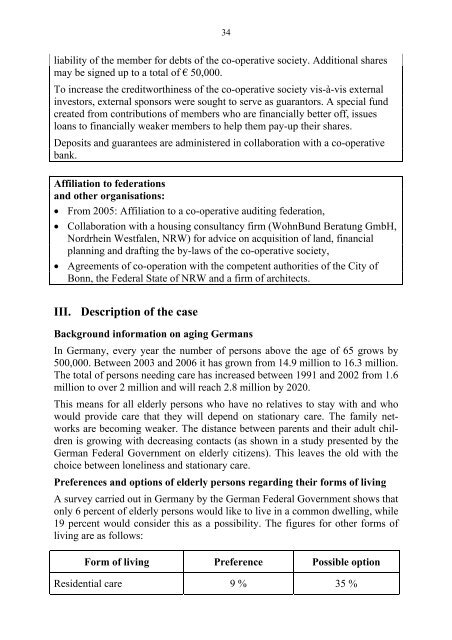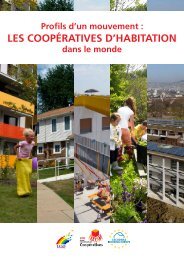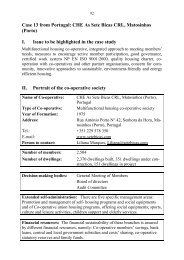Case 5 from Germany Amaryllis Co-operative Society ... - ICA Housing
Case 5 from Germany Amaryllis Co-operative Society ... - ICA Housing
Case 5 from Germany Amaryllis Co-operative Society ... - ICA Housing
You also want an ePaper? Increase the reach of your titles
YUMPU automatically turns print PDFs into web optimized ePapers that Google loves.
liability of the member for debts of the co-<strong>operative</strong> society. Additional shares<br />
may be signed up to a total of € 50,000.<br />
34<br />
To increase the creditworthiness of the co-<strong>operative</strong> society vis-à-vis external<br />
investors, external sponsors were sought to serve as guarantors. A special fund<br />
created <strong>from</strong> contributions of members who are financially better off, issues<br />
loans to financially weaker members to help them pay-up their shares.<br />
Deposits and guarantees are administered in collaboration with a co-<strong>operative</strong><br />
bank.<br />
Affiliation to federations<br />
and other organisations:<br />
• From 2005: Affiliation to a co-<strong>operative</strong> auditing federation,<br />
• <strong>Co</strong>llaboration with a housing consultancy firm (WohnBund Beratung GmbH,<br />
Nordrhein Westfalen, NRW) for advice on acquisition of land, financial<br />
planning and drafting the by-laws of the co-<strong>operative</strong> society,<br />
• Agreements of co-operation with the competent authorities of the City of<br />
Bonn, the Federal State of NRW and a firm of architects.<br />
III. Description of the case<br />
Background information on aging Germans<br />
In <strong>Germany</strong>, every year the number of persons above the age of 65 grows by<br />
500,000. Between 2003 and 2006 it has grown <strong>from</strong> 14.9 million to 16.3 million.<br />
The total of persons needing care has increased between 1991 and 2002 <strong>from</strong> 1.6<br />
million to over 2 million and will reach 2.8 million by 2020.<br />
This means for all elderly persons who have no relatives to stay with and who<br />
would provide care that they will depend on stationary care. The family networks<br />
are becoming weaker. The distance between parents and their adult children<br />
is growing with decreasing contacts (as shown in a study presented by the<br />
German Federal Government on elderly citizens). This leaves the old with the<br />
choice between loneliness and stationary care.<br />
Preferences and options of elderly persons regarding their forms of living<br />
A survey carried out in <strong>Germany</strong> by the German Federal Government shows that<br />
only 6 percent of elderly persons would like to live in a common dwelling, while<br />
19 percent would consider this as a possibility. The figures for other forms of<br />
living are as follows:<br />
Form of living Preference Possible option<br />
Residential care 9 % 35 %





